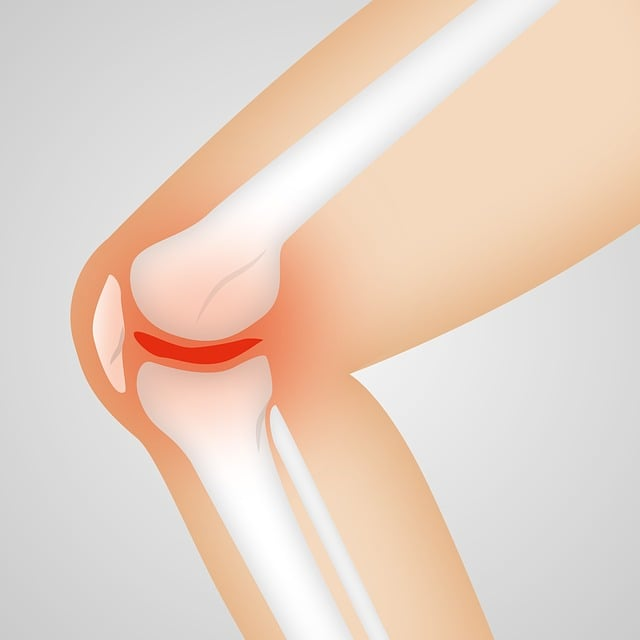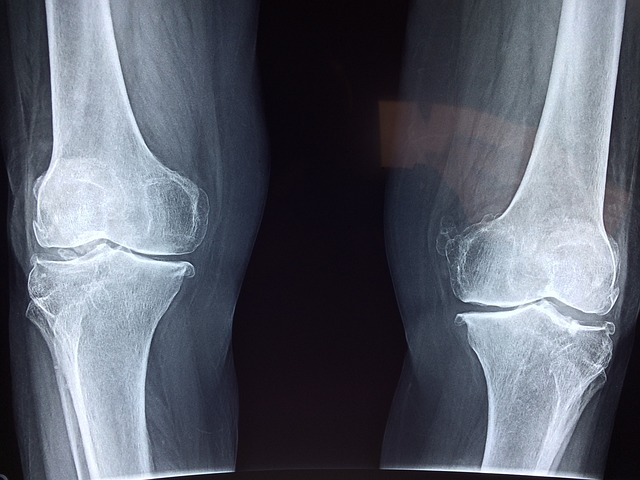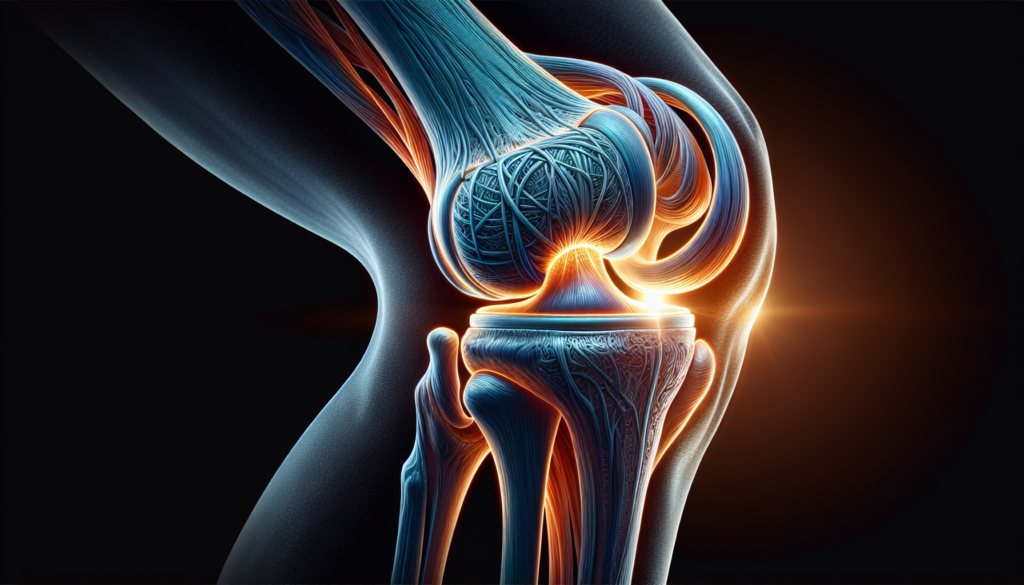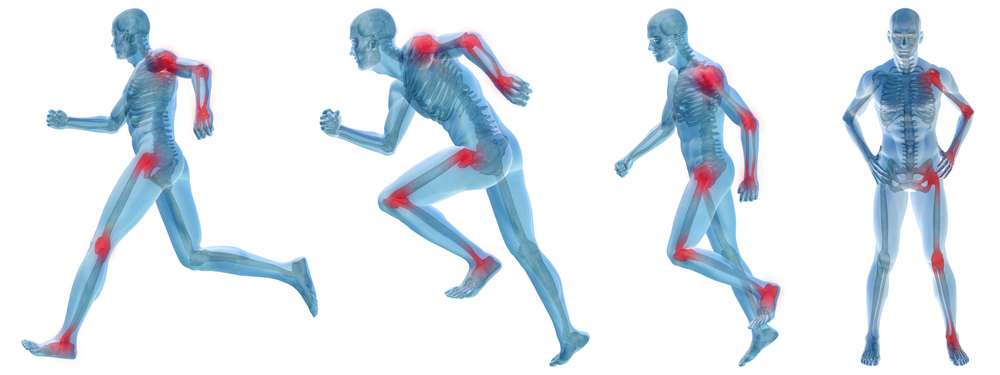Are you looking for the most significant and recent breakthroughs in knee surgery? This article brings you directly to the forefront of the latest advancements in knee surgery, detailing how innovations like robotic assistance, minimally invasive techniques, and personalized implants are enhancing surgical precision and speeding up recovery for knee injuries. Our focus is to offer you insights into how these developments directly affect patient care without diving into overly complex medical jargon or sales pitches.
Key Takeaways
- Robotics in knee replacement surgery improve precision, resulting in better implant positioning, joint stability, and quicker patient recovery, exemplified by systems like the Mako robot.
- Minimally invasive surgery (MIS) techniques, such as quadriceps-sparing approaches and ERAS protocols, are advancing the field by reducing tissue trauma and optimizing recovery, leading to enhanced patient outcomes.
- Personalized joint implants and 3D printing are pioneering personalized medicine in orthopaedics, offering improved implant fit and function, promoting bone growth and integration, and thus potentially increasing implant longevity.

Cutting-Edge Robotic Assistance in Knee Replacement
The role of robotics in knee replacement surgery has been a game-changer. By enhancing the precision of surgical techniques, robotics have significantly improved implant positioning and alignment, leading to better joint stability and balance. One of the leaders in this field is the Mako robot by Stryker Corp. This system exemplifies how robotic assistance supports surgeons through a preoperative surgical plan, and intraoperative customization, optimizing surgical outcomes.
Robotics have revolutionized total knee arthroplasty. The sub-millimeter precision offered by these systems, combined with real-time 3D visualization, provides a level of control that was previously unimaginable. But what does this mean for the surgeon and the patient? Let’s delve deeper into the role of robotics in total knee arthroplasty, their impact on surgeon performance, and patient-centered outcomes.
As we navigate the intricacies of robotic assistance in knee replacement surgery, we’ll explore how these technological advancements are reshaping the experience and expectations of both patients and surgeons. From the surgeon’s perspective, robotics offer a more efficient and predictable surgical process. For patients, the benefits are even more profound—greater precision in surgery translates to less post-operative pain and quicker recovery.
The Role of Robotics in Total Knee Arthroplasty
When it comes to knee replacement surgery, precision is paramount. And that’s where robotics comes into play. Robotic systems provide guidance for precise bone cuts and facilitate accurate implant placements using a virtual model of the patient’s knee joint, thus ensuring that each joint replacement surgery corresponds to the patient’s distinct size and shape. With the increasing demand for knee and hip replacements alone, this technology is becoming more essential than ever.
The ability of robotic systems to make minute adjustments to bone resection allows for the effective correction of deformities and ensures balanced load distribution in the knee. This is particularly beneficial for patients with prior knee trauma or surgeries, as the advanced precision of robotics can tailor the procedure to the patient’s anatomy and their unique anatomy and biomechanics, making robotic surgery a valuable option.
Another significant advantage of robotics in total knee arthroplasty is ligament balancing. By registering preoperative laxity and assessing balance once the surgery is completed, robotic systems aid in ligament balancing. This convergence of precise bone preparation, ligament balancing, and accurate implant sizing, facilitated by robotics, contributes to the improved success and functional outcome of total knee arthroplasties.

Impact on Surgeon Performance
The introduction of robotics in knee surgery has revolutionized not only patient outcomes but also the surgeon’s performance. Some benefits of using robotics in knee surgery include:
- The ability to make intraoperative adjustments to correct malalignments and avoid compound errors in technique
- Improved precision and accuracy in surgical procedures
- Enhanced visualization of the surgical site
- Reduced risk of complications and improved patient safety
- Faster recovery and shorter hospital stays
Moreover, the use of robotic-assisted knee surgery has not significantly increased surgical time when compared to traditional navigation-assisted procedures, thereby supporting efficiency in the operating room.
The introduction of robotic-assisted total knee arthroplasty (RATKA) has streamlined the operating room setup, needing less manual instrumentation, and potentially improving efficiency. Surgeons experienced with robotic systems contribute to improved operating room efficiency by reducing operating times and enhancing predictability in implant sizing.
However, the integration of new technologies into clinical orthopaedic work is highly dependent on the surgeons’ experience and their receptivity to these technologies. The willingness of orthopaedic surgeons to incorporate these technologies into their operative practices is greatly influenced by their perceived advantages, disadvantages, and their own experiences with these technologies.
Patient-Centered Outcomes
Robotic-assisted total knee arthroplasty has shown promising results for patients. Studies have indicated:
- Shorter hospital stays
- Higher rates of home discharge, indicating quicker early recovery for patients
- Higher satisfaction among patients who underwent robotic-assisted knee surgery
- More natural knee feel reported by patients
- Lower pain levels at final follow-up
Interestingly, there were no significant differences reported in perioperative pain scores, opioid usage, complications or reoperations between robotic-assisted and manual knee replacement surgeries. This suggests that while robotic-assisted surgeries offer significant advantages in the immediate post-operative period, long-term outcomes are comparable to manual procedures.
One of the most exciting developments in robotic-assisted knee surgery is the potential for continuous remote monitoring after surgery. This offers the potential to identify high-risk patients and improve outcomes while reducing healthcare costs. Indeed, the future of patient care seems to be increasingly personalized and data-driven, with real-time insights enabling more effective interventions and better overall outcomes.
Innovations in Minimally Invasive Surgery (MIS)
In the quest for better patient outcomes and improved recovery times, minimally invasive surgery (MIS) techniques have come to the forefront. These techniques, such as partial knee replacement and quadriceps-sparing approaches, reduce trauma to the surrounding tissues, resulting in less post-operative pain and expedited recovery compared to traditional surgical approaches.
Let’s delve into two of the most innovative MIS techniques: quadriceps-sparing techniques and enhanced recovery protocols. These methods are not just about less invasive surgical procedures, but also about speeding up the recovery process and reducing post-operative complications. By focusing on preserving the body’s natural structures and optimizing recovery protocols, MIS techniques are revolutionizing the patient experience.
As we navigate through the advancements in minimally invasive surgery, we’ll explore how these techniques are reshaping the landscape of knee surgery. From quadriceps-sparing techniques that offer reduced postoperative knee pain and quicker recovery, to enhanced recovery protocols that focus on advanced pain relief methods and perioperative care improvements – the innovations in this field are truly remarkable.
Quadriceps-Sparing Techniques
Quadriceps-sparing total knee replacement surgery is a minimally invasive procedure that offers numerous advantages over traditional total knee replacement, including:
- Reduced postoperative pain
- Quicker recovery
- Minimal scarring
- Diminished tissue trauma
- Lower blood loss
This technique achieves these benefits by avoiding incising the quadriceps tendon and using a targeted approach with a smaller and less deep incision.
The approach is particularly beneficial for younger, healthier patients who are not overweight and are committed to their postoperative rehabilitation. By reducing trauma to the tissues surrounding the knee, patients can experience less pain and a faster recovery time, making this surgical technique a game-changer in knee surgery.
The advent of minimally invasive techniques such as quadriceps-sparing total knee replacement represents a shift in the orthopaedic paradigm – a shift towards patient-centered care that minimizes trauma and optimizes recovery. As we continue to innovate and refine these techniques, the potential for improved patient outcomes continues to grow.
Enhanced Recovery Protocols
Complementing the minimally invasive techniques is the advent of Enhanced Recovery After Surgery (ERAS) protocols. These protocols focus on advanced pain relief methods as a cornerstone for improving postoperative outcomes. Multimodal analgesic techniques, including the use of nerve blocks, are integral to managing patient pain and facilitating early mobilization which is crucial for recovery.
Spinal anesthesia is a key component of regional anesthesia techniques that can reduce the need for postoperative opioids, further enhancing recovery protocols. Additionally, perioperative care improvements, such as the use of tranexamic acid to minimize blood loss and maintain normothermia through active patient warming, also contribute to enhanced recovery following knee surgery.
The development and implementation of these enhanced recovery protocols represent a significant step forward in patient care. By prioritizing chronic pain and management and optimizing perioperative care, we can help patients recover faster and return to their daily activities sooner. This is the power of modern medicine – to not just treat the disease but to enhance the patient’s overall well-being.

Personalized Joint Implants and 3D Printing
Personalized medicine is making strides in the field of orthopaedics with the advent of personalized joint implants and 3D printing technologies. These technologies aim to reproduce native knee anatomy and biomechanics, providing a better fit and potentially improved functional outcomes.
Let’s delve deeper into how these technologies are tailoring implants to individual needs, and the advancements being made in bone growth and integration. We’ll explore how 3D printing technologies are being used to create implants that mimic the natural movement and form of the patient’s knee, providing a more natural feeling post-surgery.
As we navigate through these advancements, we’ll explore how personalized joint implants and 3D printing are reshaping the landscape of knee surgery. From tailoring implants to individual needs to promoting bone growth and integration, these technologies are revolutionizing the patient experience and potentially improving functional outcomes.
Tailoring Implants to Individual Needs
One of the key advancements in knee surgery is the development of customized implants. These implants are specifically designed from individual CT scans, ensuring that each implant corresponds to the patient’s distinct size and shape. By closely mimicking the natural movement and form of the patient’s knee, customized implants are believed to provide a more natural feeling than standard implants post-surgery.
The utilization of 3D printing technology in creating implants from a CT scan offers numerous advantages, including:
- Optimal fit that benefits those with unusual bone anatomy or significant bone loss
- Improved longevity by facilitating precise implant placement
- Enhanced bone preservation
- Potentially reduced post-operative effects such as blood loss and swelling
Through the application of 3D imaging and additive manufacturing technologies, we can create implants that not only enhance the patient’s comfort but also improve surgical outcomes. As we continue to innovate and refine these techniques, the potential for improved patient outcomes continues to grow.
Advancements in Bone Growth and Integration
Beyond the design and fit of the implant, the integration of the implant with the patient’s natural bone is crucial for the success of the surgery. Advancements in implant design and 3D printing technology are promoting bone growth and integration, improving the longevity and biocompatibility of knee implants.
Modern implants support the conservation of the patient’s knee anatomy, which aids in natural bone growth and integration after knee surgery. 3D printing technology has enabled the construction of knee implants with porous structures that mimic the natural porosity of bone, positively affecting bone ingrowth.
Furthermore, the use of titanium in 3D-printed knee implants has been found to improve biocompatibility and bone ingrowth. Features specifically designed into 3D printed knee implants promote bone growth, minimizing or completely removing the need for bone cement and thus potential long-term complications.
Smart Implants and Wearable Tech
In the era of smart technology, even knee implants are becoming ‘smart’. Smart implants and wearable tech, such as the Persona IQ and TracPatch Duo Knee System, provide real-time data on knee function and recovery, enabling better patient monitoring and tailored rehabilitation plans.
As we navigate through the advancements in smart implants and wearable tech, we’ll explore how these innovations are reshaping the landscape of patient monitoring. Here are some ways these technologies are revolutionizing the way we approach recovery and rehabilitation:
- Monitoring post-operative progress
- Tracking vital signs in real-time
- Providing remote monitoring capabilities
- Enhancing patient engagement and compliance
- Enabling personalized treatment plans
The integration of smart technology into knee implants and wearable devices is transforming the way surgeons and patients approach post-operative care. By providing real-time data on knee function and recovery, these technologies enable a level of patient monitoring and care that was previously unimaginable.
Monitoring Post-Operative Progress
The power of smart knee implant technology lies in its ability to provide continuous remote monitoring of patient recovery. Equipped with Bluetooth-enabled devices, these implants allow for the tracking of important recovery metrics including step count, range of motion, and activity levels.
Data collected daily by the Smart Knee technology supports remote, real-time monitoring by surgeons of the patient’s post-operative recovery. Tailored and effective rehabilitation plans are devised based on this data, ensuring each patient’s recovery path is optimized.
Moreover, sensors within smart knee implants can:
- Alert the medical team about potential issues like infections or malfunctions, enabling prompt adjustments to the patient’s care
- Offer continuous remote monitoring
- Identify high-risk patients
- Improve outcomes
- Reduce healthcare costs.
The Future of Patient Monitoring
Looking to the future, wearable sensor technology and biocompatible materials show immense promise for the evolution of post-operative care and recovery tracking. The TracPatch Duo Knee System is a wearable sensor technology that monitors knee angle implant position and step count, offering real-time feedback on patient recovery following knee arthroplasty.
The information gathered by wearable sensors is utilized to evaluate recovery kinetics, aiming to create benchmark recovery curves for healthcare providers and patients to use during the rehabilitation period. This continuous monitoring enhances the precision of recovery tracking, enabling more effective interventions and better overall outcomes.
Future developments in patient monitoring are promising due to the application of biocompatible materials and technologies in sensors, similar to those used in implanted cardiac devices. As technology continues to evolve, we can expect to see even more innovative solutions for patient monitoring and care in the years to come.
Enhanced Surgical Planning with Advanced Imaging
Advanced imaging techniques, such as advanced tools such as 3D motion capture and fluoroscopy, are transforming the field of orthopaedic surgery. These technologies improve surgical planning, implant positioning, and postoperative assessment, leading to improved patient outcomes and enhanced surgical performance.
As we delve into the world of advanced imaging, we’ll explore how these techniques are being applied to enhance surgical planning and impact clinical outcomes. From using 3D imaging to create personalized surgical plans to using fluoroscopy to assess healing post-surgery, these technologies are revolutionizing the field of knee surgery.
The integration of advanced imaging techniques into the surgical process offers a level of precision and predictability that was previously unimaginable. By providing accurate representations of knee movement and continuous high-resolution X-ray imaging, these technologies allow surgeons to tailor each procedure to the patient’s unique anatomy and biomechanics, enhancing both the surgical outcome and the patient’s post-operative recovery.
From Image to Action
Patient-specific instrumentation (PSI) is a cutting-edge technology that uses 3D imaging to create customized surgical plans and cutting guides. This technology enhances the precision of implant positioning, leading to improved surgical outcomes.
PSI involves modeling the specific partial knee replacement anatomy of a patient to inform a customized surgical strategy. By design, PSI aids in the meticulous planning of bone resection and alignment of the knee replacement components following each patient’s unique anatomy.
The use of PSI in knee surgery represents a shift towards more personalized and precise surgical procedures. By tailoring each procedure to the patient’s unique anatomy, surgeons can achieve a level of precision and predictability that improves both the surgical outcome and the patient’s post-operative recovery.
Impact on Clinical Outcomes
While advanced imaging provides valuable information for surgical planning, its impact on clinical outcomes varies depending on the specific condition and patient population. For instance, advanced imaging such as preoperative MRI has limited impact in non-specialized units when used for diagnosing conditions that can also be evaluated through clinical examination.
In certain scenarios, however, advanced imaging can provide significant clinical benefits. For example, in the elderly, MRI proves to be more beneficial before knee surgery to exclude certain pathologies that are not addressed by knee replacement surgery. For patients with acute knee injuries, MRI is recommended to ensure that immediate surgical concerns are not missed in preparation for joint replacement surgery.
It’s clear that while advanced imaging offers significant benefits for surgical planning, its impact on clinical outcomes is context-dependent. As we continue to refine these techniques and understand their applications, we can better utilize these tools to improve patient outcomes and enhance surgical performance.
Navigating the Learning Curve: Surgeon Training and Adaptation
The successful implementation of new technologies in knee surgery requires significant surgeon training and adaptation. Robotic-assisted techniques, for instance, present a significant learning curve for surgeons. Overcoming this learning curve is crucial for the successful integration of these technologies into clinical practice.
In the following sections, we’ll explore how surgeon training and adaptation are being addressed in the field of orthopaedics. From educating the next generation of orthopaedic surgeons to balancing innovation with experience, we’ll delve into the strategies being employed to equip surgeons with the skills and knowledge they need to effectively utilize these new technologies.
As we navigate the learning curve of integrating new technologies into orthopaedic practice, we’ll explore the challenges and opportunities that lie ahead. Some of the key areas we will focus on include:
- The significant learning curve presented by robotic-assisted techniques
- The crucial role of surgeon training and adaptation
- The importance of continuous learning and innovation in the field of orthopaedics
This journey underscores the importance of staying up-to-date and embracing new technology advancements to provide the best possible care to our patients and effectively monitor each patient’s progress.
Educating the Next Generation of Orthopaedic Surgeons
Integrating new technologies into clinical orthopaedic work requires specialized training. This is particularly important for the next generation of orthopaedic surgeons, who will be at the forefront of implementing these technologies in clinical practice. Orthopaedic doctors’ intentions to adopt new technologies are influenced by their experience, perceived benefits, and the quality of the technologies. This underscores the importance of providing comprehensive and hands-on training for these doctors, equipping them with the skills and knowledge they need to effectively utilize these technologies.
Training of surgeons in the latest knee replacement technologies has been shown to improve the alignment between estimated and final implant sizes, leading to enhanced predictability and outcomes of surgeries. This highlights the crucial role of training in enhancing surgical performance and improving patient outcomes.
Balancing Innovation with Experience
The integration of new technologies into clinical orthopaedic work, including physical therapy, is a delicate balancing act. On one hand, these technologies offer significant advantages in terms of precision and predictability. On the other hand, they present new challenges and require a significant investment in terms of time and training.
Experienced surgeons play a key role in helping to integrate new technologies into modern medical practice. Their insights and experiences are invaluable in providing the data needed for implementation. However, perceived disadvantages and risks of new medical technologies can deter experienced surgeons from adopting them.
There’s a necessity for collaboration between orthopaedic surgeons, including a skilled orthopaedic surgeon, and researchers to facilitate the integration of new technologies into medical practice. By working together, we can harness the full potential of these technologies to improve patient outcomes and enhance the quality of care.
Summary
In the rapidly evolving field of orthopaedic surgery, the advancements in knee surgery are truly remarkable. From the precision of robotic assistance to the personalization of 3D-printed implants, these innovations are transforming the landscape of knee surgery. By enhancing surgical performance and improving patient outcomes, these technologies are revolutionizing the way we approach knee surgery.
However, the journey is far from over. As we continue to innovate and refine these techniques, the potential for improved patient outcomes continues to grow. With advancements in smart implants, wearable tech, advanced imaging, and surgeon training, the future of knee surgery is brighter than ever. Contact Plancher Orthopaedics today to see how our orthopaedic surgeons can help you with your knee injury using the latest advancements in robotic surgery!
Frequently Asked Questions
What improvements have been made to the total knee replacement?
Improvements to total knee replacement include the use of cementless knee surgery and specially designed 3D-printed surfaces, allowing bone to grow over the prosthetic and potentially increasing the longevity of the joint. Additionally, advances in knee arthroplasty have led to improved accuracy in implant positioning, limb alignment, implant sizing, and reduced soft tissue damage, with the remaining challenge in partial knee replacements being ligament balancing.
What type of knee replacement is most successful?
Total knee replacement (TKR) is considered one of the most successful procedures in all of medicine, with an extremely high likelihood of success for patients with inflammatory arthritis. It is among the safest and most effective orthopaedic surgeries.
What is the new approach to knee surgery?
The new approach to knee surgery is minimally invasive total knee replacement, which involves smaller incisions and less cutting of the surrounding tissue compared to traditional knee replacement. This approach may lead to less pain and decreased recovery time, but it’s not yet clear if it increases the risk of certain complications.
What is the latest breakthrough in knee replacement surgery?
The latest breakthrough in knee replacement surgery is the Smart Knee implant, which features a Bluetooth-enabled sensor and has received FDA approval, allowing patients to stay connected to their healthcare team at all times.
What role does robotics play in knee surgery?
Robotics in knee surgery improves the precision of surgical techniques, leading to better joint stability and balance. This ultimately enhances implant positioning and alignment, benefiting the surgical procedure.




 William D. Murrell, MD
William D. Murrell, MD Thomas B. Evely, DO
Thomas B. Evely, DO Clifford Voigt, MD
Clifford Voigt, MD Karthikeyan Chinnakkannu, MD
Karthikeyan Chinnakkannu, MD Max N. Seiter, MD
Max N. Seiter, MD Demetris Delos, MD
Demetris Delos, MD Lauren M. Fabian, MD
Lauren M. Fabian, MD